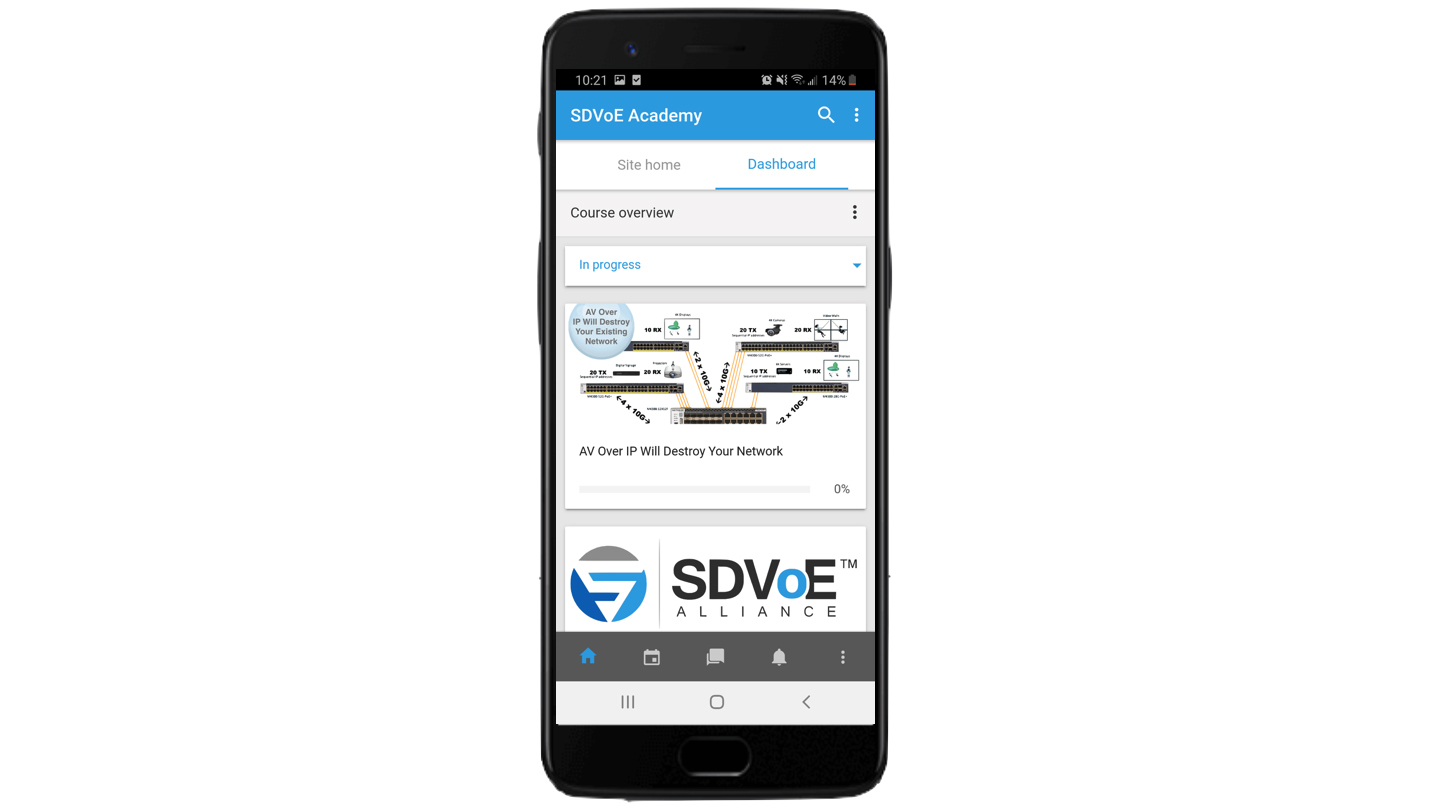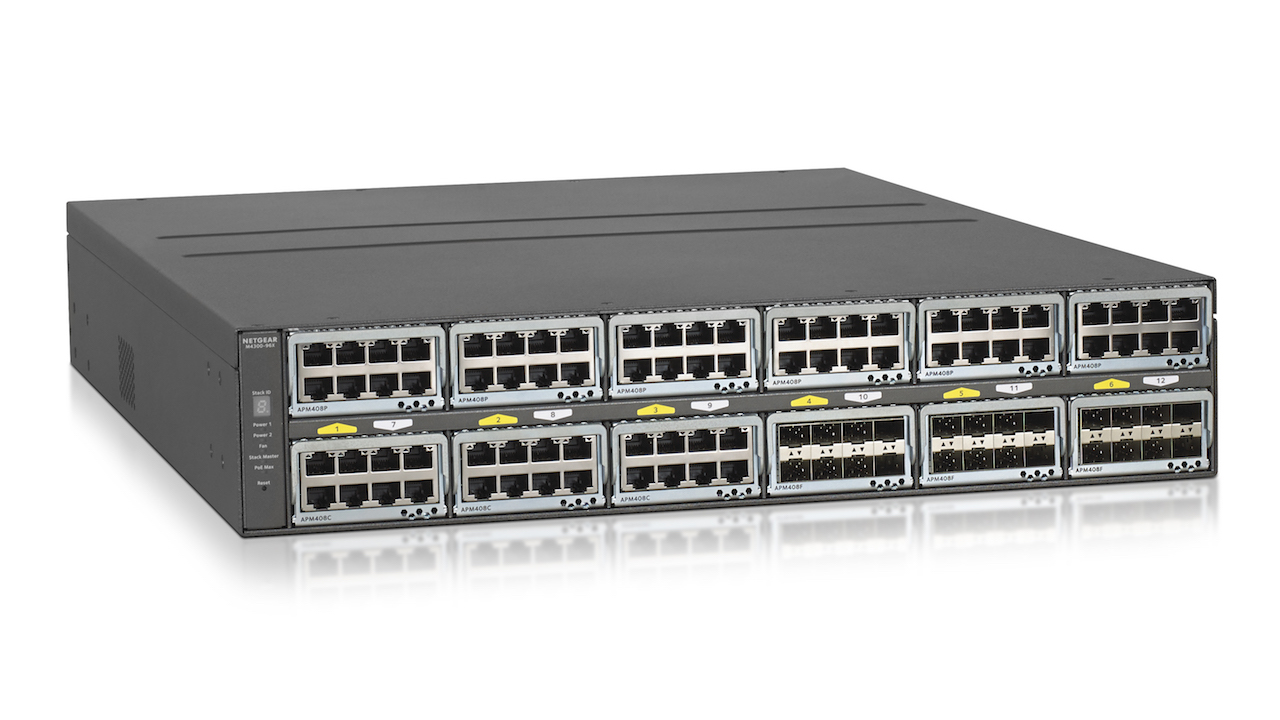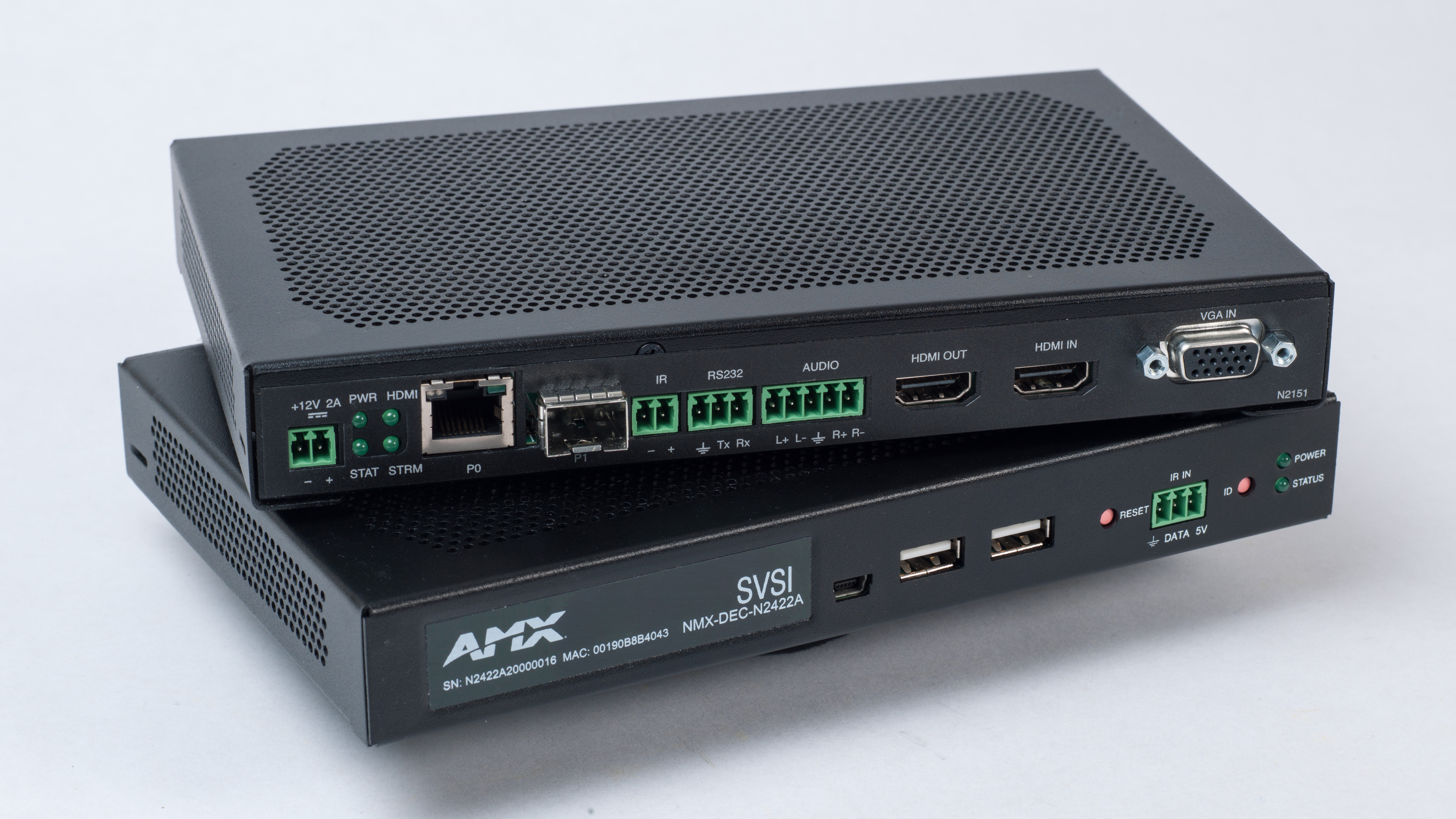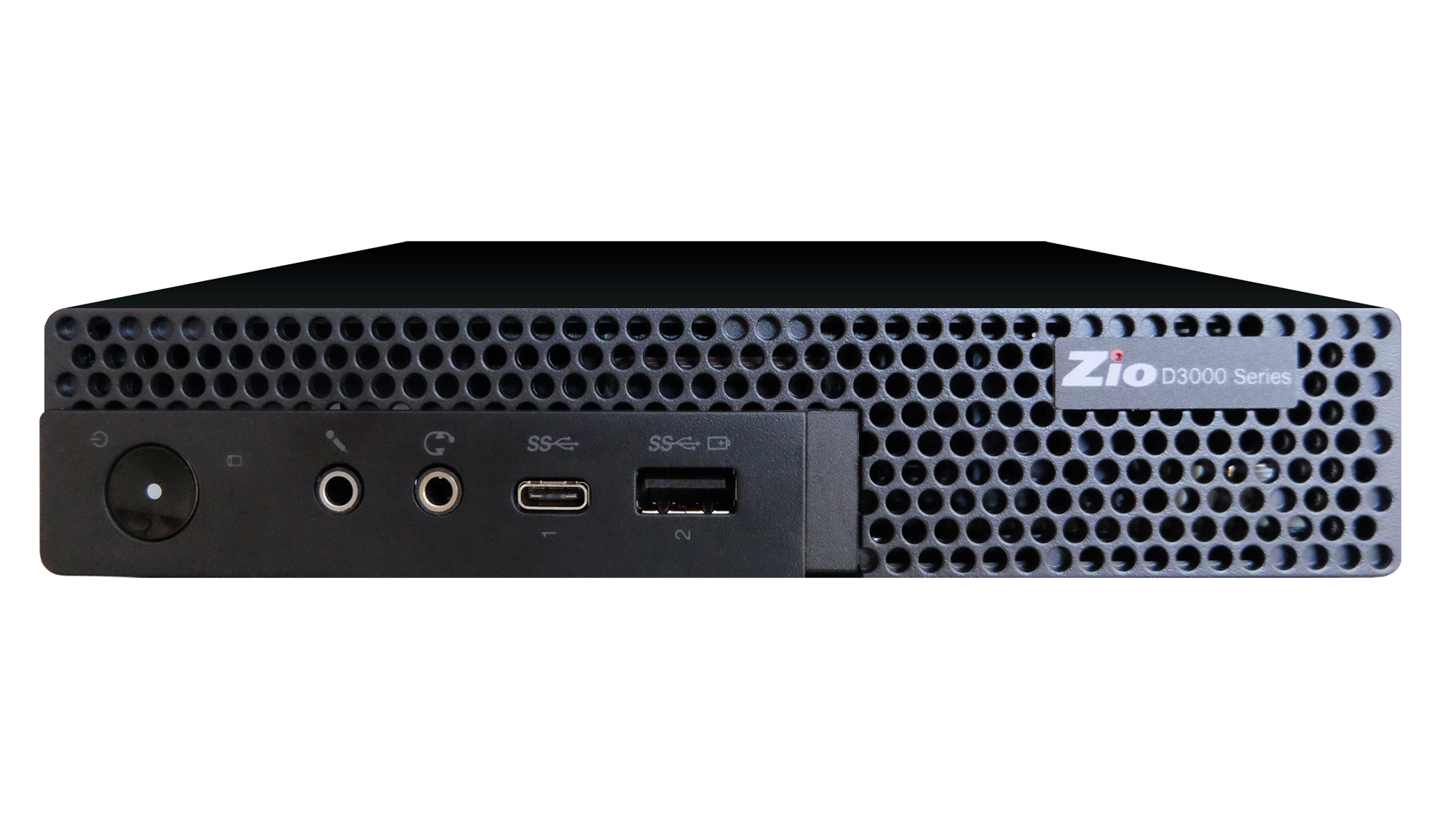Moving Forward with the Adoption of AV over IP
The evolution of AV over IP technology has come at the industry quickly, but actual AVoIP implementation has been slow, leaving some integrators struggling to adapt. This article explores best practices and procedures to ensure a smooth AVoIP adoption in any installation.
The merging of AV technology with IT and IP has occurred at a pace few could have predicted. This rapid evolution has created a wide disparity of skills and abilities among AV integrators with regard to overlapping into traditional IT territory. Some have adapted and are moving forward, others are struggling, but most are somewhere in the middle. Still, many would agree that global adoption of AV over IP has been slower than expected.
Speeding adoption and management of proposed technology solutions creates an environment in which the best and most sustainable solutions for the enterprise can be the driving factor in technology selections. The technology, rather than ability, can be the driver in these decisions, and AV over IP challenges can be turned into opportunities.
There are a few general principles that are preventing wholesale implementation of an AV and IP convergence. In exploring what is keeping us apart, we can begin a conversation, and maybe define concrete actions that can draw us together and deliver more cohesive results.
Understanding and Adopting IP/IT Practices
AV professionals often do not understand the basics of how IP protocols work, or how to address issues and concerns that reside within the IT department. Conversely, the IP focus is completely different than the AV focus, and too often both sides struggle to reach across the aisle, so to speak. But AV and IT must collaborate for successful IP network convergence.
“Actually understanding and adopting IP and IT practices to enterprise and industry-standard levels have delayed true adoption, in my mind,” said Derrick Kelly, director of technical service operations at Whitlock.
Kelly suggested more robust cross-training between areas where there is overlap. At Whitlock, many senior managers have altered their hiring practices to develop blended teams with different areas of expertise. In understanding one another’s goals, capabilities and limitations, both AV and IT teams become better trained on what works and what doesn’t in terms of both AV technology and IP protocols.
Bandwidth issues are probably the largest point of contention between the two departments. As long as AV is pushing 4K (and beyond!) through the network, there will be bandwidth restrictions. IT is not very happy when the AV group comes in making demands. So if both groups have a better understanding of the needs and abilities of the other, they are more likely to work together for the good of the final product.
A daily selection of features, industry news, and analysis for AV/IT professionals. Sign up below.
IP network convergence requires that AV pros gain IT networking skills
Territorial Confusion
As AV and IT continue to merge, it can be challenging to determine where one department’s responsibilities end and another’s begin. If hardware takes up too much bandwidth on the system, who is responsible for resolving that? In reverse, some AV hardware requires sophisticated programming to maximize efficiencies. Who will do that and ensure it works with existing interfaces? What is the best way to communicate what’s needed and how to prioritize the work?
Mark Coxon, sales director at Tangram, insists it’s essential to move away from a siloed view of the world and toward one that allows for collaborative work among IT, AV, furniture, architecture, customers, on-site tech managers, and anyone else whose expertise contributes to a better outcome. The more complex the project, the more critical this collaboration becomes.
“By looking at the whole instead of the parts and working toward partnerships with customer IT teams/end users/decision-makers and all of the important elements of a customer’s team—both internal and external—allows for a holistic approach to the customers’ needs. The more protected and siloed groups are, the less likely true adoption and growth will occur.”
“Some of that does mean checking egos and biases at the door, and going in with an open and willing mindset to provide the best solutions,” Coxon explained. “That attitude removes barriers and allows for better adoption. The more collaboratively delivered projects and systems that there are, the better the products, work and adoption will be.”
It’s important to remember that each side of the equation has a knowledge base that is critical for success.
Partnership Mentality
Partnerships create wins. Kelly explained how the teams at Whitlock have adopted a partnership mentality that has led to success.
“We believe strongly that the customer’s IT team is a partner in our technology deployments instead of a hurdle or adversary,” Kelly commented. “In the past, people avoided certain conversations because the climate was always more of ‘us versus them.’ Now our goal is always working toward the strongest partnership possible for the deployment. There will always be situations where that doesn’t work, but those should the exceptions, not the rule.”
By necessity, that process and relationship-building means taking a longer-term view of the sales cycle, design, and project deployment expectations. Kelley added that at Whitlock, this approach has proven beneficial in providing solutions in line with the current technology, as well as keeping future expectations in mind.
“It’s tempting to fall back to what is comfortable and just wanting to get things completed as quickly as possible—and sometimes with good reason,” Kelly said. “But that continues the cycle of slow adoption. We have to push ourselves beyond our comfort zone on a daily basis.”
Dollars and Sense
Coxon agrees that many integrators have limited IT skillsets, but he adds that margin protection is also driving their mindset. “Some integrators lack the needed skillsets to configure layer 3 managed switches or to determine QOS settings,” said Coxon. “On the other end of the spectrum, many firms shied away from AV over IP—especially the ‘V’ part—because the gross profit dollars of a proprietary matrix switch are much higher. They need to protect product margins to support their business models.”
The basics of AV over IP infrastructure
Making a Change
To smooth the transition of AV over IP, integrators look to senior members of their respective teams to set direction and model the right approach. Depending on the culture of each company, this may be a rapid change or a slow evolution.
“Whitlock has always made choices to look for appropriate foundational adjustments to our offerings,” Kelly pointed out. “Sometimes that involves organizational or structural changes, and the shift to a broader skill set and product offering falls right in line with that philosophy. Innovation is talked about in multiple stages—short term, mid term, long term, etc. A focus on long-term relationships with both customers and manufacturers allows the ability to discuss current and future trends. This, in turn, allows us to work on pain points for us, our customers, and our manufacturing partners. That process helps us understand where we need to adjust and how quickly. If we listen and partner correctly, the shift to new technologies, options, and processes becomes much easier.”
Tangram has focused on developing the needed skill sets in-house, and even leveraging the internal corporate IT department. “We have found strategic partners like Access Networks that have already undergone AVoIP certification with leading manufacturers,” Coxon said. However, he cautioned that it’s important to partner with organizations that share your corporate values. “Access Networks, like Tangram, offers white glove service to help design, configure, and manage networks. With a similar approach to business, it’s proven to be great partnership.”
Communication Is the Driver
Within the company, look to specific subject matter experts to discover which parts of the company understand certain things better, and then shine a light on their capabilities. The team should work together to make sure that the right people are involved in customer and internal conversations, design/sales opportunities, and deployment needs. In this way, there is true relationship development and continual refinement of processes to incorporate AVoIP into day-to-day business practices.
“Communication will help everyone become very familiar and comfortable with IP protocols, managed networks, and timecodes,” Coxon said. “But even more important is the idea of transitioning to a services-based industry as opposed to a product sales-based industry. That will take time and effort.
Future Predictions
The debate between open platforms and proprietary platforms continues to rage. Coxon predicted that AVoIP will see proprietary ecosystems fade.
“From an audio perspective, AVoIP is already gaining traction, with products like Dante, AES67, and Q-SYS,” Coxon noted. “Similarly, on the video side, we need more cross-platform devices. A video extender should work with any video receiver, regardless of brand. The proprietary ecosystem and secret sauce models will only last in the short term. Just like the world wide web’s strength was that it was an open platform given freely to all, we need AVoIP protocols that do the same to create one sandbox and encourage the kids to play nicely together.”
The promise of AV over IP for the pro AV market
Kelly also shared his take on what lies ahead: “Long term, there will continue to be a consolidation toward consistent interfaces, processes, and protocols. A good percentage will adopt standard IT methods and may move beyond AV integration or design firms for delivery and focus.
“If the products continue to become easier to deploy and become familiar to IT teams by adhering to their standards, it will be harder for AV teams to silo themselves from IT or other technology providers,” Kelly added.
True service will continue to be a differentiator within this AVoIP space. In fact, services could well be the differentiator in building successful long-term relationships.
“With services attached, capabilities and flexibility will become the true path forward and the differentiator for the AV integration and design firms over the expanded competitive base of IT and technology providers,” concluded Kelly.
The adoption of AVoIP is only going to grow, so identifying areas where your team needs to better embrace this shift is a great place to start. Education is key, so as training sessions are offered by manufacturers, get all the right players involved so the team can move cohesively toward what lies on the horizon.
New AV over IP Products

DVIGear DisplayNet AV Distribution
Powered by SDVoE technology, DisplayNet provides flexible AV distribution with zero frame latency, artifact-free image quality, and near-infinite scalability. DisplayNet leverages 10GbE technology to switch, extend, and distribute lossless HDMI signals with zero frame latency at resolutions up to 4K/60Hz. The advanced video processing features in the DN-200 Series offer instantaneous signal switching, a customizable multiviewer mode, and advanced video wall functionality, in addition to integrated USB 2.0 routing.

Hall Research 4K Video Plus USB Extension—Point-to-Point and Over LAN
VERSA-4K can extend and switch multiple HDMI video and USB data signals to a virtually unlimited number of receivers on a simple gigabit network. Bidirectional IR, RS-232, and auxiliary stereo audio can also be extended. Advanced features include low-latency video and audio, CEC, Serial over IP, video wall processor, video rotation and flipping, USB device filtering, automatic KVM switching, Telnet and WebGUI control, and PoE (power over Ethernet). Four USB ports are on the receiver.

Aurora Multimedia IPX-TC3 Series
Aurora says its IPX-TC3 Series is the only 10 Gbps SDVoE transceiver to offer redundant fiber and selectable copper fiber in a single unit. Aurora also claims it is the first company to utilize PoE with 10G. Aurora has worked with Ethernet switch companies to develop and ship 10G PoE switches, paving the way for cleaner installations. Seamless switching, USB 2.0 (480 Mbps), Dante/AES67 8-channel (another Aurora claims as a first), 1 Gbps Ethernet, and control are some additional core capabilities.

SDVoE Academy
As the AV industry inevitably transitions to IP-based solutions, education is paramount, and a primary mission of the SDVoE Alliance. Through the SDVoE Academy online platform and mobile app, users can work at their own pace, anywhere and everywhere, to discover just how simple it is to enjoy the flexibility and scalability of Ethernet while benefiting from the performance of a matrix switch—4K video without compromise, without latency, and without image artifacts. It’s all free, and there’s even a track that leads to SDVoE Design Partner certification.

Atlona OmniStream
The OmniStream AT-OMNI-122 (OmniStream 122) is a dual-channel AV decoder with networked redundancy from the OmniStream Pro AV over IP family. OmniStream 122 supports HDMI signals up to 4K/UHD @ 60Hz plus HDR formats, along with embedded Dante/AES67 audio and RS-232 or IR control pass-through. As with all OmniStream products, the OmniStream 122 streamlines integration with 1 Gbps managed network switch compatibility, accelerating deployments and simplifying migrations from circuit-based systems. Users also benefit from built-in audio de-embedding, multichannel audio downmixing, and local or PoE powering.

Silex Insight VC-2 HQ
The high-quality profile and low-delay syntax of VC-2 is used to achieve low compression ratio, typically up to four times visually lossless. The algorithm is lightweight and works without external memory (operates without the need of DDR memory), allowing cost-effective implementation, according to the company. The VC-2 High Quality codec has ultra-low latency due to its slice-based processing. 4K 60p real-time encoding and decoding takes just 0.0593 milliseconds.

Black Box MCX Multimedia Distribution and Management System
The newest addition to Black Box’s AV product portfolio, the MCX multimedia distribution and management system, takes advantage of modern 10GbE infrastructure to enable AV and data payloads to exist on the same IT networks. Enabling converged networked AV, MCX delivers up to 4K60 4:4:4 uncompressed video over 10GbE with industry-low latency and switch times. The system eliminates any compromise between latency, bandwidth, and video quality, as well as the need to maintain dual networks to support AV and IT data independently across the enterprise.

Netgear M4300 Switches
Netgear’s M4300 family of switches offers up to 10G networking with an out-of-the-box, zero-touch installation. The company says these products offer a substantial cost savings when compared to HDBaseT matrix switchers. The M4300 switches offer multicast that is already configured for plug-and-play. In addition, the switches offer both fiber and copper connectivity for short- and long-haul distribution.

Harman AMX N2400
AMX’s SVSI N2400 4K60 4:4:4 encoders and decoders support streaming video resolutions up to 4096 x 2160 and HDCP 2.2, with latency so low that they are able to support sensitive applications like live action events and interactive presentations. Product features include AES67 digital audio support, power-over-ethernet, KVM support, the ability to easily adjust bandwidth and resolution, LocalPlay content, a network-attached windowing processor, networked video recorder, 802.1x authentication, Active Directory support, SSL/TLS encryption, and more.

RGB Zio D3000 Series
The Zio D3000 Series provides a full-function video wall for IP signals up to 4Kp60 resolution. The D3064 model shown supports signal decodes and display over four monitors, each up to 4K resolution, covering the popular 1x2, 1x3, 1x4, and 2x2 arrays. The Zio D3000 Series is part of RGB Spectrum’s AVoIP family of products that provides enterprise networked video distribution across LANs, WANs, and even mobile networks.
Camille Burch is a creative thinker, marketing strategist, and award-winning writer. She is the current editor of Digital Signage Magazine.

